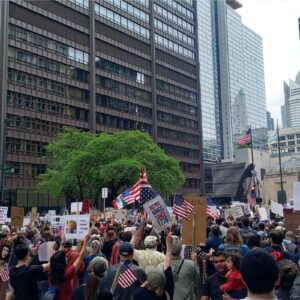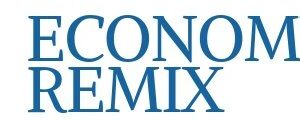
In 2020, the nation witnessed an unprecedented moment of collective reckoning that philanthropy and corporate America could not ignore. Pressure to speak and act came from all sides. Protests filled the streets, employees and customers demanded change, and funders competed to demonstrate visible commitments to racial justice. The moment moved even institutions that had long been hesitant or outright resistant.
Now, in 2025, that external pressure has subsided, and in its place is a chilling retrenchment. Justice-centered organizations face unprecedented material constraints. As federal funds are pulled back and institutions from philanthropy to corporations like Target hit pause, many nonprofits were left to operate in survival mode.
For some, this retreat is a return to their comfort zone because the commitment was conditional. For others, the threats are real and urgent, but they are still trying to find their footing. The difference now is that fear, not movement pressure, is the leading factor.
We know that in this moment, what may feel like “safety” is, in fact, the most dangerous position of all.
As Black women leaders of consulting firms that support funders and systems change initiatives across the country, we’ve had front-row seats to the sector’s transformations and its hesitations. We’ve built our careers by taking calculated risks as founders and facilitators, and we know that in this moment, what may feel like “safety” is, in fact, the most dangerous position of all.
This is a “builder’s moment.” Indeed, it demands radical imagination from all of us. The work ahead requires us to think long-term, partner differently, and reimagine what bold, coordinated action can look like. We must bring new collaborators to the table, support organizers inside institutions, and help each other see our work (and our roles in it) with renewed clarity.
The Myths of This Moment
A dangerous amnesia is creeping across nonprofits and philanthropy. Some suggest that the urgency around racial equity has passed, and we should shift our focus to class or income disparities, as if those systems are not inextricably linked to racial hierarchies. This forgetting erases centuries of racialized capitalism, decades of movement building, and the realities that so many people in communities face today.
Yes, the political climate is hostile. Yes, some threats are certainly real. But the most dangerous myths are the ones circulating inside our own field—which are being used to rationalize retreat. What do these look like? Here are few examples:
- Myth: “It’s illegal to do racial equity grantmaking.”
Fact: Racial equity grantmaking remains fully legal and is sorely needed. Some organizations are leading with courage, making rapid response grants to groups that have lost federal funding, including some not structured as nonprofits, such as limited liability corporations. They’re showing that when the old lanes are blocked, we can and should think creatively to build new ones.
- Myth: “This moment is just a pendulum swing.”
Fact: What we’re experiencing is the result of long-term, strategic conservative movement building. The opposition has played the long game: investing in infrastructure, aligning narratives, and coordinating efforts to dismantle equity-focused work. Meanwhile, too many misread this moment as temporary turbulence or part of the natural ebb and flow of progress. In truth, what we face is a structural assault designed to last—or, at a minimum, take years to dismantle and build anew.
- Myth: “We’re protecting our institution.”
Fact: But at what cost to communities, to mission, to the future our institutions claim to be working toward? A generous interpretation for those in philanthropy is that some are trying to safeguard their endowments to ensure they can help rebuild when the tide turns. But whether you are in philanthropy, a nonprofit, or a movement group, the truth is the same: You cannot hit pause on equity and justice now without harming your ability to rebuild later. People of goodwill need to ask themselves right now: What are the bedrock principles you are not willing to sacrifice? What does it look like to move in courage? What will you stand for even when it’s inconvenient or contested?
The Opportunity of New Terrain
As Audre Lorde said, “When I dare to be powerful—to use my strength in the service of my vision, then it becomes less and less important whether I am afraid.” There’s something to be said about being scared for your life and showing up anyway.
If we remain stuck in mindsets of preemptive compliance or attachment to what was before, we cannot create space for the future we want.
That’s what we’re witnessing now. The wheat has been separated from the chaff. What remains are people who are clear-eyed about our past, sober about our present, and unshakably committed to what’s possible. We are the ones who know business-as-usual won’t cut it.
Strategic opposition and our own retreat have cleared the landscape of social impact: Funding streams have been redirected, DEI initiatives dismantled, and racial equity language scrubbed from websites. But those of us with deep roots in movement work know that soil is never truly empty. When forests burn, they create conditions for new growth. When fields lie fallow, they regenerate. As a proverb from Cameroon teaches us, “The darkness of the night cannot stop the light of the morning.” This moment of disruption offers us something precious: the chance to build again, differently.
If we remain stuck in mindsets of preemptive compliance or attachment to what was before, we cannot create space for the future we want. The invitation is not to restore what was—those systems and power dynamics have revealed their limitations. Instead, we must reimagine and co-create something stronger.
A Love Letter and a Call-In
Remember why you entered nonprofit and movement work in the first place. Recall the equity and financial commitments your board endorsed and approved. Remember: Racial equity grantmaking is still legal. It is still urgent. And it is still the right thing to do.
While we are living through a time of manufactured fear, we are not living in a moment of actual scarcity. For those within philanthropy, resources haven’t disappeared; they have increased.
According to foundation investment tracker FoundationMark, US foundation assets increased $170 billion to $1.636 trillion in 2024—11.5 percent higher than the year before. Yet many foundations still limit their giving to the bare minimum 5 percent payout required by law.
We have seen examples of courage from philanthropic leaders, from nonprofit leaders, and from people on the frontlines, such as federal workers. What unites these responses is the courageous willingness to act—not in some abstract future moment, but right now, when it counts.
An Invitation to Build
This is a builder’s moment. Will we meet the moment with the imagination, integrity, and investment it requires?
We invite you to consider what collective courage could look like and the role each of us can play in living it. What practices, agreements, and models can guide us?
Toward that, here is one simple action you can take this week: Identify one racial equity commitment your organization made over the last five years. What would it take to revive it with greater intentionality and clearer purpose? Have that conversation at your organization today.














